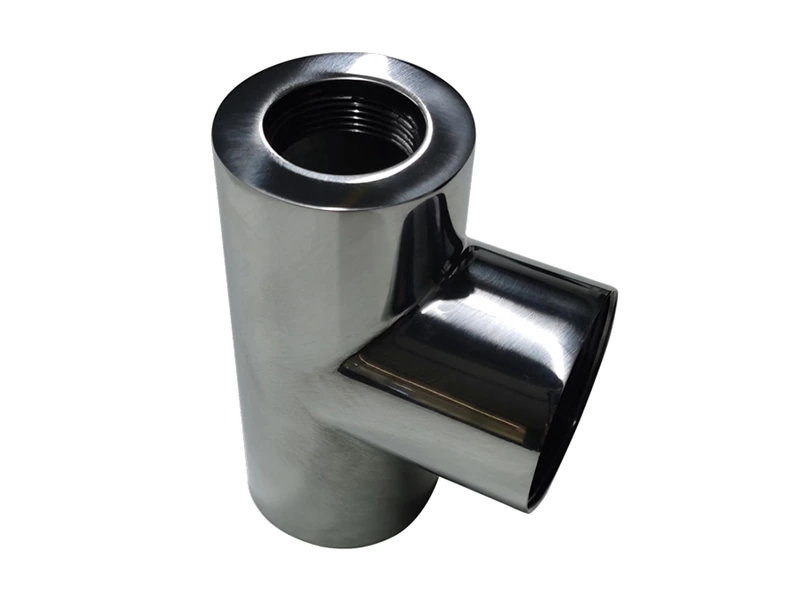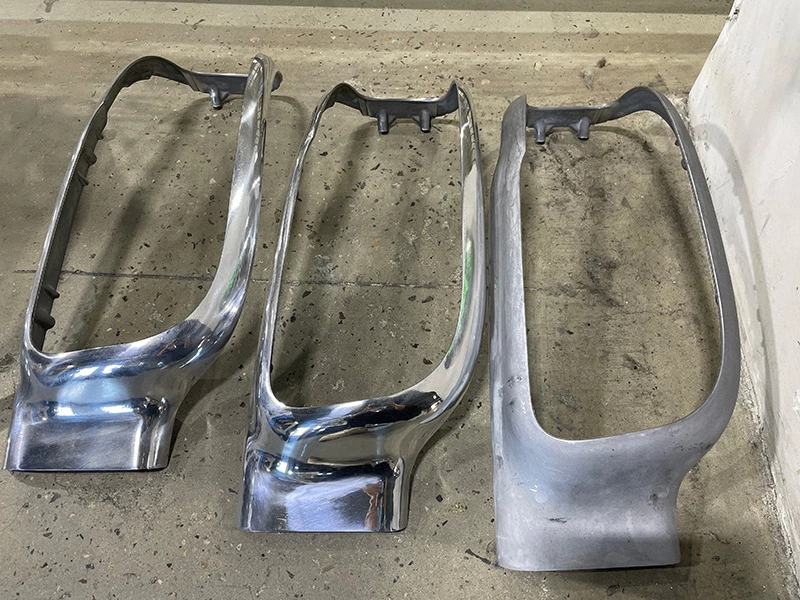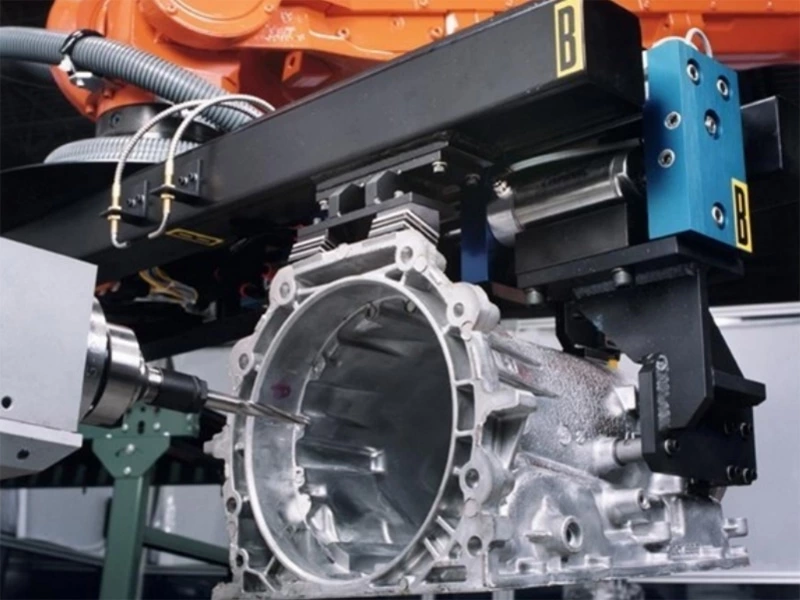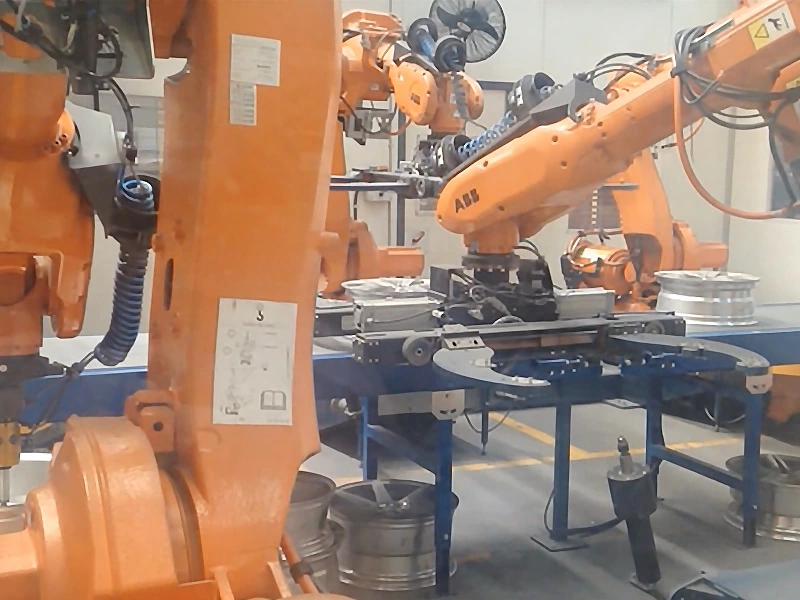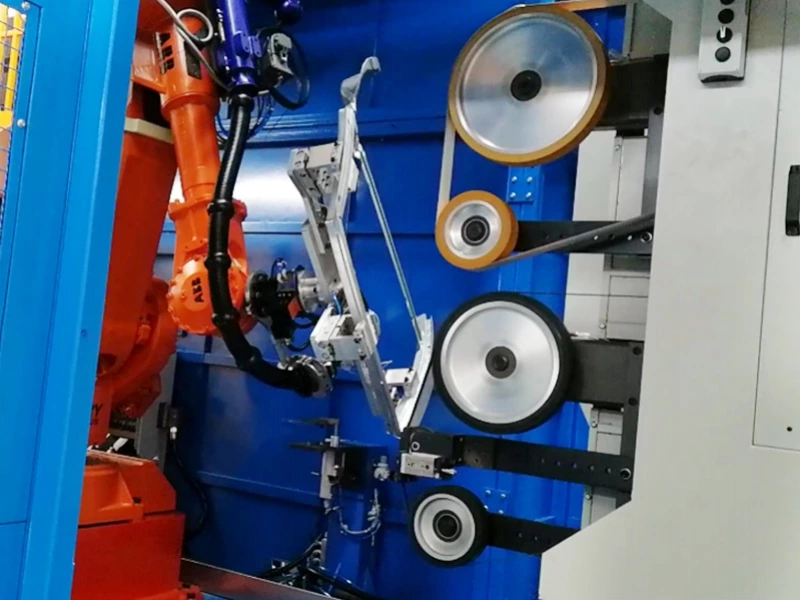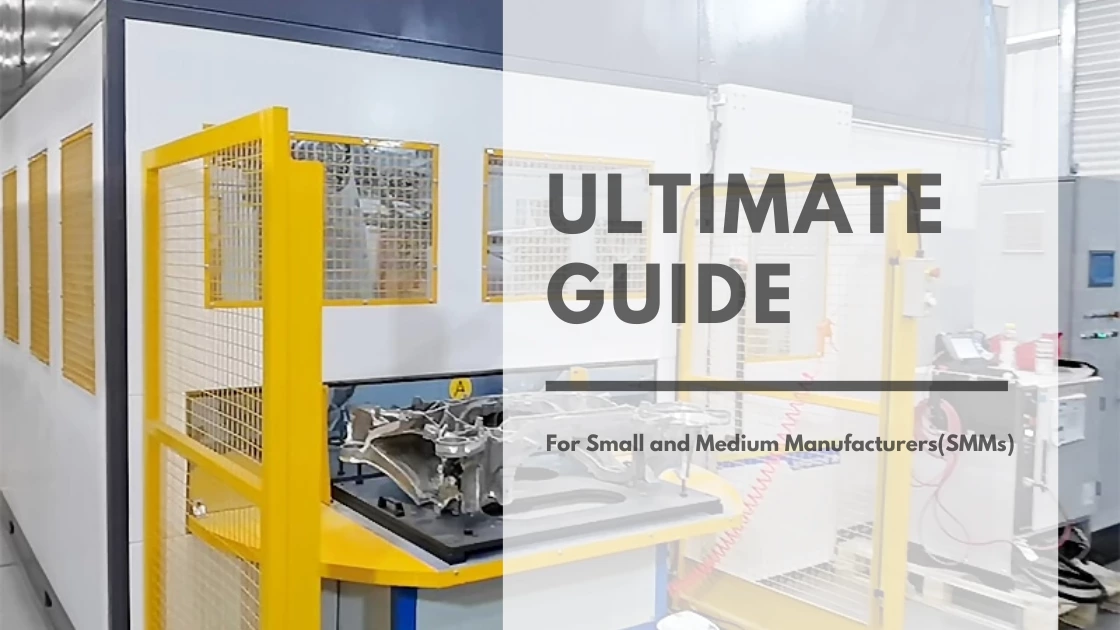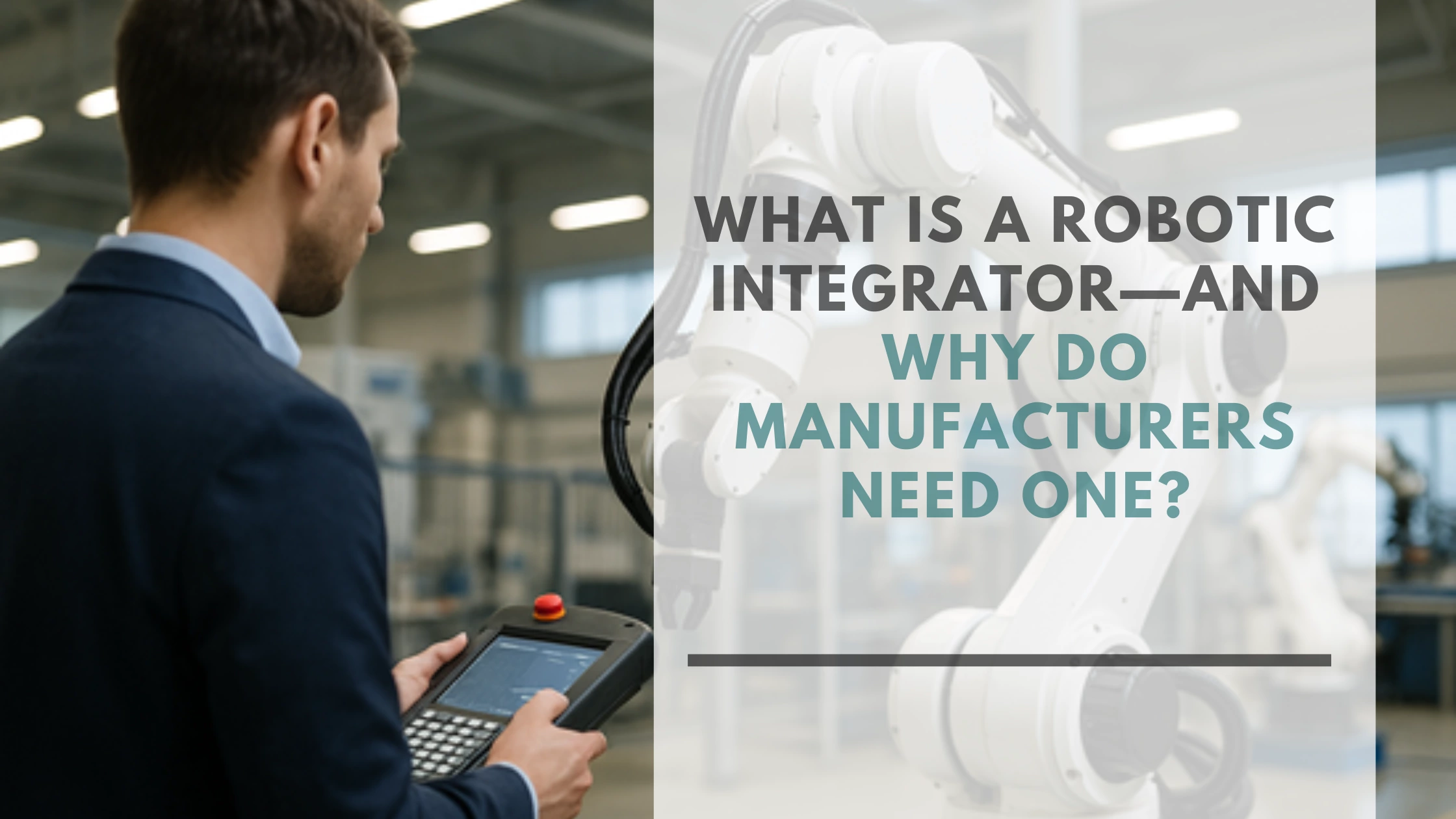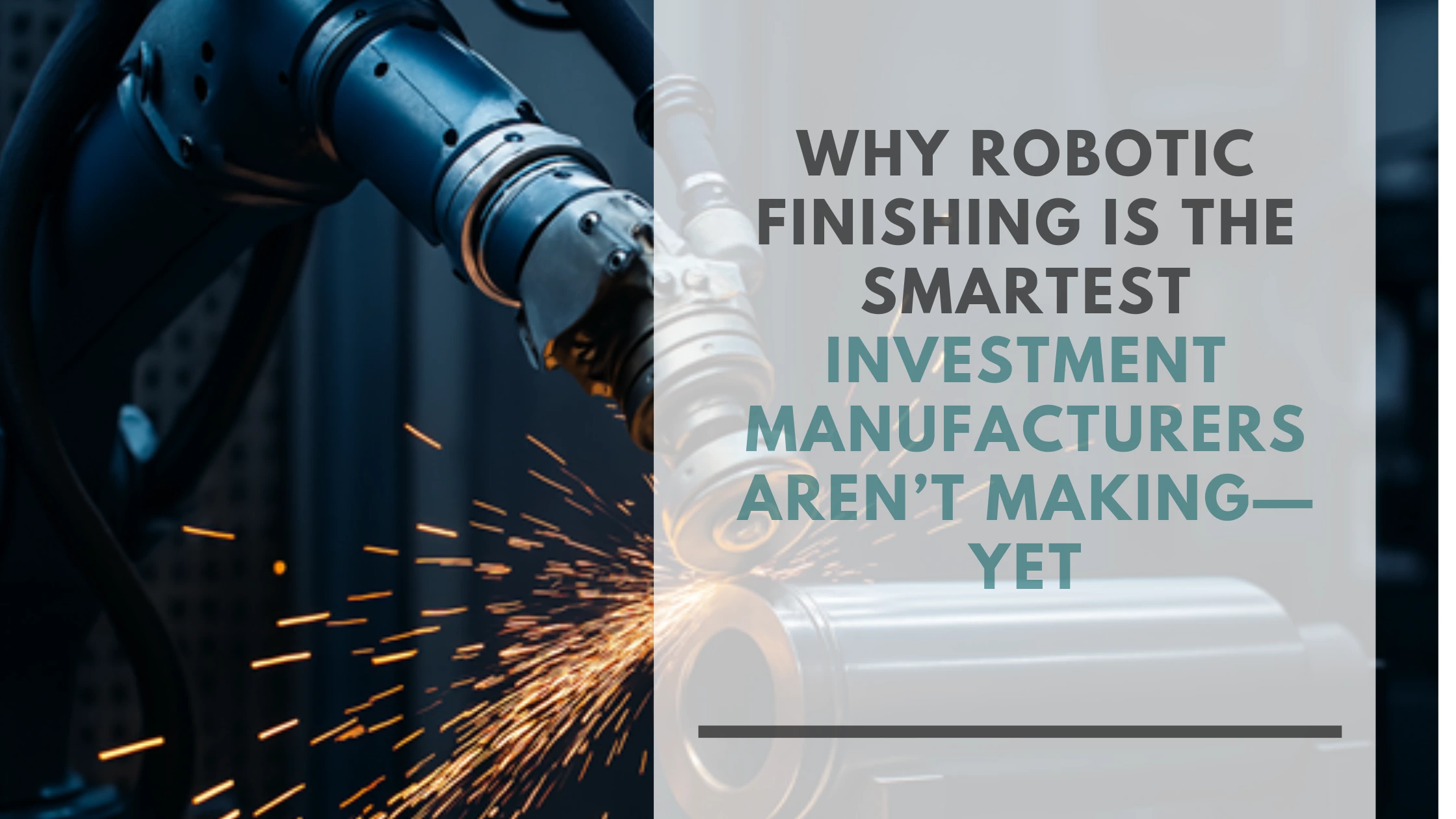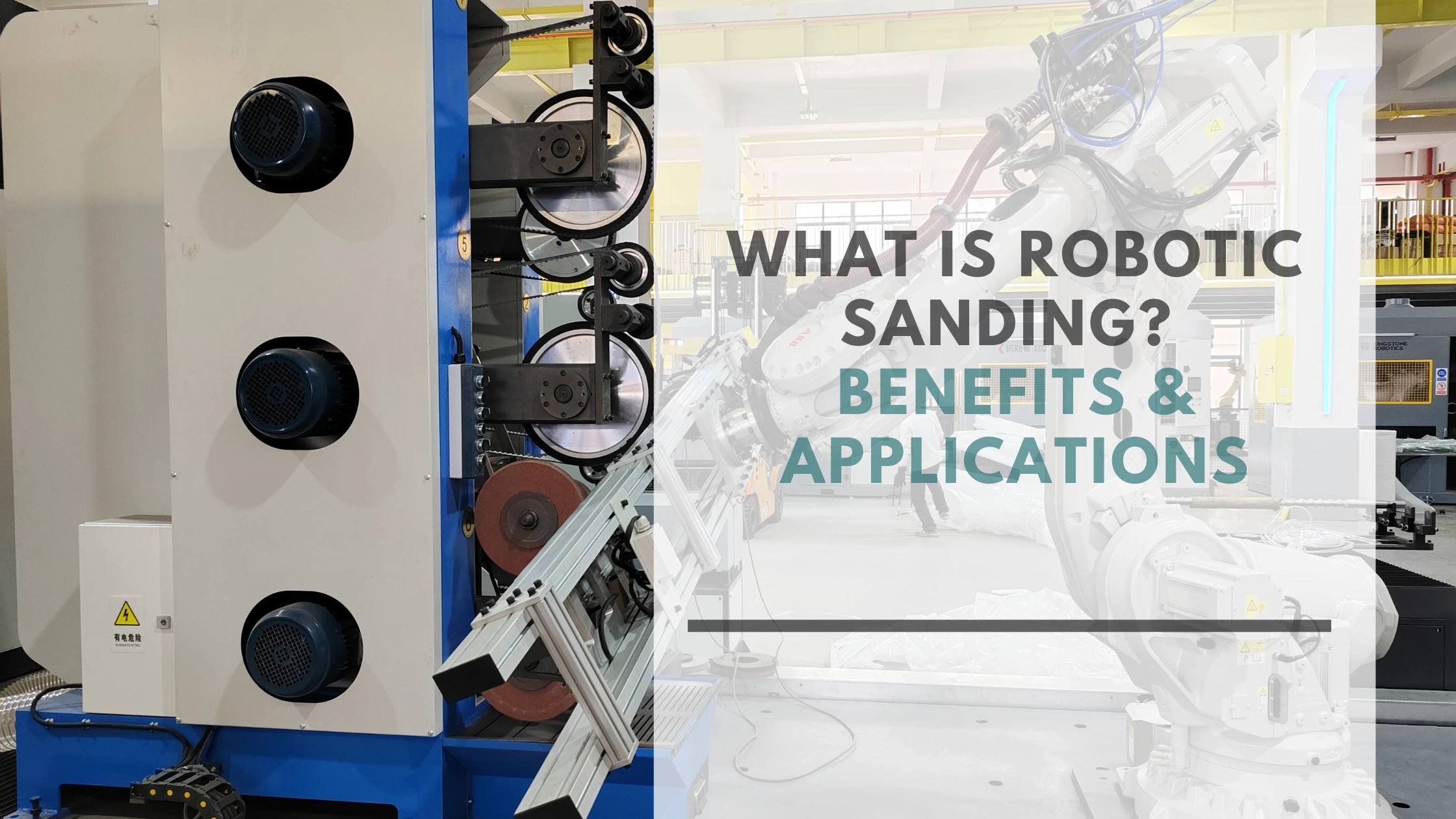Automatic Metal Polishing Machines
Introduction
Automatic metal polishing machines are sophisticated systems designed to polish metal surfaces with minimal human intervention. These machines work on a wide range of metals – from stainless steel and aluminum to brass and titanium – delivering smooth, reflective finishes that meet strict industrial standards. In modern manufacturing, they have become vital for ensuring that components have consistent surface quality. Whether used in automotive, aerospace, rail transit, or other sectors, automatic polishing equipment produces uniform, high-grade finishes on parts such as engine components, turbine blades, and structural panels. By automating the polishing process, manufacturers can achieve levels of precision and consistency that are difficult to obtain with manual labor, while also increasing throughput and reducing errors.
Working Principle of Automatic Metal Polishing Machines
Automatic polishing machines typically consist of motor-driven polishing heads or wheels, abrasive media (buffing pads or belts coated with polishing compound), fixtures or conveyors to hold and move the workpiece, and a computerized control system. How it works: the metal part is secured (often on a rotating table or a conveyor belt) and brought into contact with the polishing heads.

A dual-head automatic metal polishing machine: each rotating buffing wheel is coated with abrasive compound to smooth and shine metal surfaces. The polishing heads rotate at controlled speeds and press against the metal, systematically removing scratches, oxidation, and minor surface irregularities. As the part moves through the machine, the heads traverse its surface, applying the polish evenly.
Advanced machines are equipped with sensors and feedback controls that monitor parameters like polishing pressure, speed, temperature, and compound application. These controls adjust the process in real-time to ensure a uniform finish across the entire part. For example, if a sensor detects a drop in polishing pressure on a curved section of an aerospace component, the system can automatically compensate by adjusting the head angle or force, maintaining consistency. The result is a high-quality, mirror-like surface finish achieved automatically. By operating according to pre-programmed recipes, an automatic metal polishing machine can repeat the exact polishing cycle for each part, guaranteeing repeatability and freeing human operators from repetitive grinding and buffing tasks.
Importance of Surface Finishing in Aerospace and Transportation
Surface finishing is critically important in the aerospace, automotive, and rail industries. Polished surfaces are not just about aesthetics – they often influence performance, safety, and longevity of components:
- Aerospace: Aircraft and spacecraft components require exceptionally smooth and precise finishes to meet stringent performance and safety standards. For instance, turbine blades and jet engine parts must be polished to reduce surface roughness, which improves aerodynamic flow and reduces stress concentrations. A polished surface on a turbine blade can enhance fuel efficiency and minimize the risk of crack initiation under high-cycle fatigue. Landing gear, hydraulic pistons, and fuselage panels are also polished or buffed to prevent corrosion and ensure reliable operation under extreme conditions. In aerospace manufacturing, surface finishing for aerospace components is thus a vital final step to achieve both functional performance and regulatory compliance.
- Automotive: In the automotive sector, metal polishing is used to enhance both appearance and function of vehicle parts. Polished engine components, drive shafts, and exhaust systems experience less friction and are easier to clean, while exterior trim, rims, and body panels gain a high-gloss appeal that consumers expect. Automatic polishing machines are employed to finish wheels, decorative trim, and even structural panels with a mirror-like sheen. This not only improves aesthetics but also removes microscopic defects that could lead to corrosion. Consistent surface finishing helps car and truck manufacturers ensure durability (by eliminating rough spots that might initiate rust) and achieve a premium look on high-end models.
- Rail Transit: The rail industry also benefits from automated polishing and grinding for both vehicle components and related infrastructure. Train parts such as couplers, traction bars, and wheel sets are often made of hardened steel that is difficult to finish by hand. Robotic polishing systems can tackle these hard steel and aluminum parts efficiently, reducing the manual effort required. For example, automatic polishing of railway bearings and connector brackets produces smoother surfaces, which reduces friction and wear in service. Even ancillary equipment like escalator step chains or automatic door tracks in train stations can be deburred and polished by robotic units to improve reliability. By ensuring smooth finishes on rail components, manufacturers can improve operational safety (since polished parts fit and move together with less resistance) and extend maintenance intervals due to reduced wear.
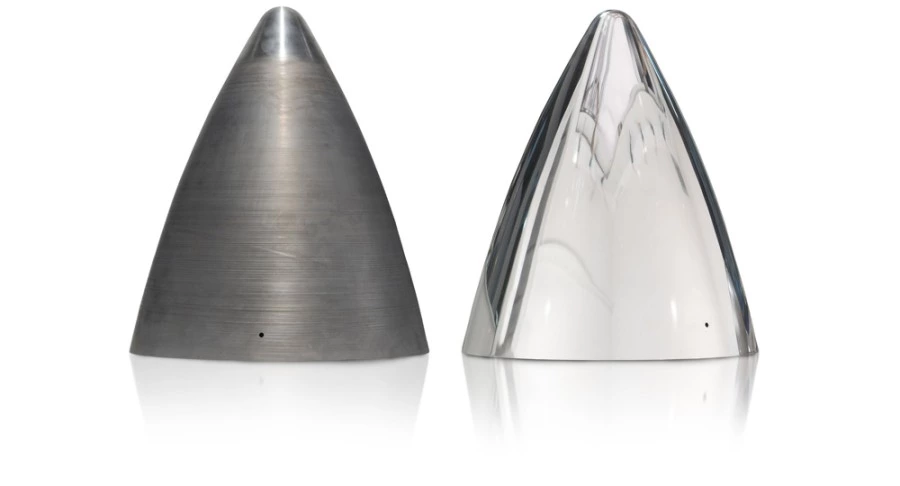
Polishing dramatically improves surface quality and performance of metal parts. Left: An aerospace nosecone before polishing (dull, with machining marks). Right: The same nosecone after automated polishing, achieving a mirror-like finish. In all these industries, surface finishing is not just cosmetic – it enhances fatigue life, corrosion resistance, and precision of fit for assemblies. Therefore, investing in proper polishing technology is essential for quality control in aerospace and transportation manufacturing.
Manual vs. Automatic Polishing: Precision, Efficiency, and Safety
Before the advent of automation, metal polishing was done manually by skilled workers using handheld grinders, abrasive wheels, and lots of elbow grease. While a trained craftsman can achieve excellent results on a single part, manual polishing has several drawbacks:
- Inconsistency: Human operators, no matter how experienced, will produce slightly varying results from part to part. Factors like hand pressure, angle, and fatigue can lead to uneven finishes. Even with great skill, it’s nearly impossible to exactly replicate results every time by hand. As a result, manual polishing often suffers from inconsistent surface quality – one part might come out mirror-bright while the next has subtle scratch lines.
- Slow Throughput: Manual polishing is time-consuming. Each piece must be worked on individually, and complex shapes require careful attention from multiple angles. This slow pace can create a production bottleneck, especially for high-volume manufacturing. In automotive or aerospace plants that produce thousands of components, fully manual polishing would severely limit throughput.
- Labor and Cost: Because it is labor-intensive, manual polishing incurs high labor costs. It also requires significant training and experience to do correctly. As production volumes rise, scaling up manual processes means hiring and training more operators, which is costly and sometimes impractical. Moreover, skilled polishers are becoming harder to find in the workforce.
- Safety and Health Risks: Polishing metal generates dust, noise, and vibration. Manual buffing of metals like stainless steel or alloys can produce harmful metallic dust and fumes. Workers performing polishing by hand face exposure to these hazards, as well as the risk of repetitive strain injuries. There is also a risk of accidents when handling grinders or buffing wheels. In short, manual polishing can pose safety concerns, creating unhealthy working conditions if proper protective measures are not in place.
Automatic polishing machines directly address these issues of the manual approach. Key differences and advantages of automated polishing include:
- Consistency and Precision: An automatic metal polishing machine can produce the same high-quality finish on every part, one after another. The programmed controls ensure consistent speed, pressure, and path, eliminating human error. This results in uniform polishing across all parts and far greater repeatability than manual methods. For industries like aerospace, where meeting exact surface roughness specifications is critical, this consistency is a major benefit.
- High Speed and Productivity: Machines don’t tire or slow down. Automated polishing systems can run continuously 24/7 if needed, significantly boosting production throughput. They work faster than human hands – for example, a multi-head polishing machine might process four or more parts simultaneously, accomplishing in minutes what might take an operator hours to do manually. This dramatically increases productivity and shortens production cycles
- Lower Long-Term Cost: While the initial investment in an automatic polishing machine is high, it pays off over time through reduced labor costs and higher yields. Fewer operators are needed to oversee the process, and the risk of scrapped parts due to polishing errors drops considerably. Consistent processing means less rework. Many manufacturers find that for high-volume operations, automated polishing is more cost-effective when considering the labor savings and improved quality (lower rejection rates). Furthermore, modern polishing robots are energy-efficient and optimize the use of polishing compounds, which can reduce operating costs per part.
- Improved Safety and Work Environment: Automation greatly reduces direct human involvement in the polishing process. Operators no longer need to hold parts against buffing wheels or inhale polishing dust all day. Enclosed automatic polishing systems often come with dust extraction or filtration units that trap particulates, thus keeping the air clean. Noise levels can be contained within machine enclosures. This creates a safer environment for workers, who can be reallocated to supervising roles away from direct contact with the hazards. In addition, by minimizing repetitive manual tasks, automation helps prevent injuries like carpal tunnel syndrome that are associated with manual polishing.
- Quality Control and Reduced Waste: Automatic machines polish every piece to the same standard, which simplifies quality control. There are fewer variations to inspect, and measurement of surface finish can be built into the process (some systems have in-line surface roughness sensors or vision inspection). The reduction in variability means parts are much more likely to meet specifications the first time, leading to less waste from rejected parts. This reliability is particularly important in high-precision fields like medical implants or aerospace where every part must pass stringent quality criteria.
It’s worth noting that manual polishing is still used for certain situations – for example, in custom or low-volume jobs, extremely intricate parts, or in repair work – where the flexibility and tactile feedback of a skilled human might be needed. However, for the bulk of manufacturing in aerospace, automotive, and rail industries, automated polishing systems far outperform manual methods in efficiency, consistency, and safety.
Integration with Robotic Systems and Flexible Automation
Modern automatic polishing machines increasingly integrate robotic technology to handle complex tasks and improve flexibility. Instead of a fixed machine that only polishes one specific shape, many systems now use multi-axis robotic arms equipped with polishing tools (buffing pads, abrasive disks, or belts) as the end-of-arm tooling. These robotic polishing systems bring several advantages:
- Multi-Axis Reach: A 6-axis industrial robot can maneuver the polishing head around complex geometries and hard-to-reach surfaces on a part. This is crucial for components like engine turbine blades or automotive body parts with intricate curves. The robot arm can adjust angle and orientation continuously, ensuring the polishing tool maintains the correct contact with every contour of the workpiece. This multi-axis movement yields a uniform finish even on complex 3D shapes that a simpler machine might miss.
- Programmable Flexibility: Robotic systems are highly programmable. Operators can create and modify polishing programs (paths, speeds, pressures) in software, allowing quick reconfiguration for different parts or finishes. This kind of flexible automation means the same robotic cell could polish an aluminum aerospace fitting in one shift and a batch of stainless steel automotive trim in the next, by simply loading a new program and tooling. The robot’s motions can be optimized via simulation or taught by demonstration for each new workpiece. This adaptability is a big advantage for job shops or integrators serving multiple industries.
- Consistency with Complex Motion: Robots, when properly programmed, execute polishing routines with extreme repeatability. They apply consistent force and follow precise trajectories, resulting in even material removal. Advanced systems include force-feedback sensors on the robot arm to maintain a constant pressure on the surface, which is particularly useful for polishing tasks (and similar processes like grinding or sanding). This force control ensures the robot doesn’t press too hard (which could gouge the part or wear the abrasive too fast) or too lightly (which would polish ineffectively). The outcome is a high-quality finish with minimal variation from part to part.
- Integration of Sensors and Vision: In a cutting-edge polishing cell, robots can be augmented with vision systems and real-time monitoring. For example, a camera might scan each metal part to detect its orientation or any defects before polishing, allowing the robot to adjust its path. Sensors can monitor surface roughness or gloss level after polishing, feeding data back to adjust the process if needed. This creates a closed-loop system where the robot “learns” or adapts to achieve the desired finish consistently. Some robotic polishing solutions even leverage AI and machine learning to optimize the polishing path on the fly, although such technologies are still emerging.
- Ease of Integration into Production Lines: Robotic polishing units can be incorporated into larger automated production lines. A robot can pick up a part from a conveyor, polish it, then place it on another station or conveyor for the next operation. This seamless handoff reduces manual part handling. In automotive factories, for instance, robotic polishing stations might be one step in a fully automated assembly line for car bumpers or trim, working in concert with other robotic stations.
Related Reading: Robotic Grinding: How Automation Delivers 24/7 Efficiency and Dramatically Cuts Costs
One example of this integrated approach is the use of robot arms for buffing car body panels, where the robot not only polishes the panel but also communicates with the conveyor system to synchronize the flow of parts. Such flexible robotic polishing systems are often delivered by specialized system integrators. These integrators combine off-the-shelf industrial robots with custom-engineered polishing heads, fixtures, and control software to create a turnkey solution tailored to a manufacturer’s needs.
Kingstone Robotics is a notable provider in this space, acting as a system integrator for automated grinding and polishing systems. Kingstone collaborates with world-class robot manufacturers like ABB, FANUC, and KUKA, leveraging these robotic arms as part of their polishing solutions. By partnering with multiple top robot brands, they can choose the optimal robot model for each project – whether it’s a heavy-payload robot for large steel components or a smaller agile robot for precision parts. Kingstone then adds their expertise in polishing process development, tooling, and software to integrate the robot into a complete automated polishing cell. The result is a highly adaptable system: for example, Kingstone has delivered systems to polish everything from sanitary hardware (faucets, door handles) to automotive and motorcycle parts, to aerospace components. The integration of advanced robotics ensures these polishing machines are not only efficient, but also versatile enough to be reconfigured for different products and industries.
Robotic integration also brings benefits in safety and maintenance. The polishing robot can operate inside a safety enclosure equipped with dust collection, so operators are shielded from debris. Maintenance tasks like changing polishing wheels or belts can be assisted by the robot positioning itself for easier access, or even automated tool changers that swap out abrasive heads when worn. With increasing levels of automation, we are also seeing trends like IoT connectivity in polishing systems – machines that report their status and alert when maintenance is needed, enabling predictive maintenance strategies to minimize downtime.
In summary, integrating automatic polishing machines with robotic systems provides the flexibility and precision required in modern manufacturing. It allows one polishing cell to handle a variety of parts and finishes, all while maintaining consistent quality and high productivity. This is especially beneficial for the aerospace, automotive, and rail industries where product mixes can be diverse and quality requirements are uncompromising.
Industry Applications and Examples
Automated metal polishing machines find use in a broad array of industry applications. Here we highlight how robotic polishing systems are applied in aerospace, automotive, and rail manufacturing, along with illustrative examples:
- Aerospace Applications: As mentioned, the aerospace industry relies heavily on automated polishing for critical components. Turbine engine blades are a prime example – after blades are cast or machined, robotic polishing removes micro burrs and smooths the airfoil surface. This process improves the blade’s aerodynamic efficiency and reduces stress risers that could cause cracks, directly impacting engine performance and longevity. Another example is polishing of aircraft skin panels and nosecones: machines buff out surface mismatches at rivet lines or welds on fuselage sections to ensure a flush, smooth exterior that minimizes drag. Landing gear struts, which are often high-strength steel or titanium and must telescope smoothly, are polished to a fine finish as part of their manufacturing process. Automated systems are invaluable here because they can achieve the required surface uniformity on these large, heavy parts much faster than manual work. Even interior cabin parts like aluminum seat frames or galley hardware might be polished for aesthetic reasons – consistency in finish is critical for these high-visibility parts in passenger aircraft. The aerospace sector often demands extensive documentation and repeatability, which robotic polishing provides, ensuring each part is finished to the exact specification set by the engineering team.
- Automotive Applications: In automotive manufacturing, automatic polishing machines are widely used for both functional and decorative parts. Alloy wheels (rims) often undergo robotic polishing after initial machining to give them a chrome-like shine and remove any machining lines. This not only makes the wheels visually appealing but also eliminates tiny notches that could lead to crack initiation under stress. Vehicle trim and moldings (such as stainless steel or aluminum window trim, emblems, or bumper accents) are polished to a mirror finish for aesthetics – automakers use automated polishing banks to process dozens of trim pieces in one go, ensuring every piece on a vehicle has the same gleaming look. On the functional side, engine and drivetrain components like crankshafts, camshafts, and valves may be polished to reduce friction or to remove surface defects that occur from heat treatment. Robotic polishing is also used in chrome plating preparation: before chrome or nickel electroplating car parts (like plastic grills or metal bumpers), an automated polishing step smooths the surface to ensure the plating adheres evenly and has a high gloss. Car manufacturers have found that using robotic polishing and buffing in the production line improves overall fit and finish quality ratings. It also speeds up the process – for example, polishing a car body panel before painting can be done in a fraction of the time with a robot, which helps meet the high production rates in automotive plants.
- Rail and Transit Applications: The rail industry might not be as immediately associated with mirror-finished parts, but surface finishing is crucial for durability of train components. A good case is railcar and locomotive bearings and wheel sets. These parts experience constant metal-on-metal contact and stress; polishing bearing surfaces and wheel treads can reduce friction and heat generation. Automated grinding and polishing units, often integrated in rail maintenance facilities, re-polish locomotive wheel treads to remove flat spots and restore the proper profile, extending the wheel’s service life. In manufacturing of new rail equipment, robotic deburring and polishing is used for components like bogie frames, suspension parts, and coupling assemblies. Kingstone Robotics, for instance, has delivered robotic grinding/polishing systems for tasks such as deburring escalator step components and polishing automatic door guides used in subway or train systems. These processes ensure that edges are smooth (preventing stress concentrations or injuries during handling) and that moving parts have low friction. Polishing the mating surfaces of a transmission gearbox housing in a train can help the parts fit together with a better seal. Additionally, public-facing metal elements in train interiors (like grab poles, door handles, or metal seat frames) benefit from polishing to a satin or mirror finish for both cosmetic appeal and corrosion resistance. The rail transit industry often involves tough materials (hardened steels, aluminums), and robotic polishing machinery is adept at handling these, reducing the difficulty and inconsistency that would plague manual polishing of large steel parts. By deploying these automated systems, rail manufacturers and maintenance operations improve the reliability and appearance of their products while controlling costs.
- Other Industries: (Beyond our main focus, it's worth noting that automated polishing is also extensively used in sectors like medical devices (for implants and surgical tools that need ultra-smooth, biocompatible surfaces), consumer electronics (polishing smartphone metal casings or stainless watch parts), and energy (polishing of turbine blades in power plants, or pipeline components). The versatility of automatic metal polishing machines makes them indispensable across diverse industries, wherever high-quality surface finishing is required at scale.)
Each of these applications underscores the adaptability of automatic polishing machines. The same core technology – automated abrasive polishing – is tuned to very different requirements: a decorative shine on a car wheel, a precise smoothness on an airplane part, or a functional deburring on a train component. This is why many manufacturers turn to specialized integrators who understand how to adjust polishing parameters for each case. When evaluating case studies of automation, one finds that a common theme is increased consistency and efficiency. For example, an aerospace firm that adopted robotic polishing for turbine blades achieved a more uniform finish and saw a reduction in post-polishing inspection failures, improving overall yield. An automotive plant that installed automatic buffing machines for alloy wheels was able to double its output of finished wheels per shift and reassign workers to quality control roles rather than manual buffing. These real-world outcomes demonstrate the significant impact that well-implemented automatic polishing systems can have on production quality and efficiency.
Selecting the Right Polishing System and Integrator
Choosing an automatic metal polishing machine (or an integrated robotic polishing system) is a critical decision for manufacturers. The right choice can lead to higher productivity and quality, but the wrong choice might underperform or be ill-suited to the task. Here are some key considerations:
- Material and Finish Requirements: First, ensure the system can handle the types of metal and the surface finish your application requires. Different metals (e.g., soft aluminum vs. hard Inconel alloy) may demand different abrasive materials and polishing speeds. Likewise, achieving a mirror finish on a decorative piece might require a different process (multiple stages of finer grit polishing) compared to simply smoothing out a rough casting for a functional part. It’s important to match the machine’s capability – in terms of abrasive type, force, speed range, etc. – with the metal and finish specs of your parts.
- Part Size and Geometry: Consider the size, shape, and complexity of the parts to be polished. For large, flat sheets of metal (like panels or sheets), a flat-bed polishing machine or wide belt sander might be appropriate. For small intricate components with lots of curves, a robotic arm with a small polishing tool could be better. Ensure the polishing cell can physically accommodate the largest part dimensions and reach into any recesses or angles on the parts. For example, polishing the interior of a deep tube might require a specialized head. Some systems are modular or can be fitted with different fixtures to handle various part geometries.
- Production Volume and Speed:Production volume is a major factor in machine selection. If you need to process thousands of parts per day, look for high-throughput machines – perhaps those with multiple polishing heads working in parallel, or a rotary table design that lets you load/unload parts continuously. High-volume operations benefit from machines that emphasize speed and have features like quick-change fixtures or automated part feeding. Conversely, if production is low-volume or involves many different part types, a more flexible but slightly slower system (like a single robotic station that you can reprogram for each part type) might be more suitable. Always verify the cycle time of the machine for your specific part and ensure it meets your takt time or throughput goals.
- Precision and Quality Control: Different applications have different tolerance for surface finish. Define what metrics matter (roughness average Ra, visual appearance, etc.) and choose a system known to achieve those consistently. If your parts have tight specifications for roughness or no scratches allowed, you might need a machine with finer control and multi-stage polishing (e.g., grinding, then polishing, then buffing in sequence). Machines with in-process monitoring or the ability to easily integrate quality checks are valuable for maintaining high standards.
- Automation and Integration Needs: Determine how the polishing machine will fit into your broader production line. Do you need it to be a stand-alone cell with an operator loading parts? Or should it integrate with conveyors and robots in a fully automated line? Ensure the control system of the polisher can interface with your factory automation (for example, can it communicate with a robot or a central line controller via standard protocols). If selecting a robotic polishing system, consider the programming interface and whether it supports the level of complexity your parts need (like CAD/CAM import for paths, etc.). A good system integrator will make sure the polishing unit can be seamlessly integrated with existing processes, including part handling before and after polishing.
- Maintenance and Support: Like all capital equipment, polishing machines require maintenance. Investigate the robustness of the machine – are the abrasive components standard and easy to replace? Does the vendor or integrator offer training, spare parts, and prompt support? Downtime on a critical polishing cell can back up an entire production line in automotive or aerospace contexts, so reliable support is essential. Some advanced machines offer IoT-based monitoring that can alert you when, say, a belt is wearing out or a motor is overheating, which can be very useful for maintenance planning.
- Budget and ROI: Automated polishing solutions range from relatively affordable bench-top units to very expensive robotic cells. Evaluate the total cost of ownership: initial purchase, installation, training, tooling, and operating costs (electricity, consumables) vs. the expected gains (labor savings, higher quality, higher output). Often, an ROI analysis is done to justify the investment. For high-volume manufacturing, the ROI of an automatic polishing machine is usually strong due to labor savings and scrap reduction. Still, it’s important to size the investment appropriately – a complex robotic system might be overkill for a company that only needs to polish a few hundred parts a month. In those cases, a simpler semi-automatic machine could suffice.
A final and crucial consideration is selecting the right system integrator or solution provider for your polishing needs. Many manufacturers opt to work with specialized integrators (like Kingstone Robotics, Acme Manufacturing, etc.) rather than trying to design the cell themselves. A good integrator will assess your specific parts and process requirements and recommend a tailored solution – which might involve equipment from multiple brands. For example, they might combine an ABB robot, a 3M abrasive system, and custom-built fixtures into one cohesive polishing cell for you. The integrator’s expertise in programming the robot’s path, selecting the right abrasive media, and tuning the process parameters is invaluable for success.
Kingstone Robotics serves as a strong example of what to look for in a polishing system integrator. They have experience across many industries and part types, as evidenced by their portfolio of solutions for everything from automotive wheels to aerospace components to bathroom fixtures. This broad application scope means they likely have encountered challenges similar to yours and have proven approaches to solve them. Kingstone’s partnerships with multiple robot manufacturers (ABB, FANUC, KUKA) and their focus on polishing/grinding applications allow them to deliver a flexible solution rather than a one-size-fits-all machine. They can choose the optimal robot and tooling for the job, and fine-tune the system to the desired finish. When selecting an integrator, it’s wise to evaluate their track record and see if they have done projects in your industry or with your material – Kingstone, for instance, has references in automotive, aerospace, sanitary hardware, medical equipment, and even military products, indicating a wide expertise.
Another point in favor of established integrators is continuous innovation. The field of robotic finishing is evolving, with new abrasives, better force control, and smarter software. Industry analyses frequently mention Kingstone Robotics alongside global automation leaders like KUKA when discussing cutting-edge polishing technology. This suggests they stay up-to-date with the latest advancements, which can be a benefit to their customers (for example, gaining access to new techniques like AI-driven polishing optimization or hybrid polishing/grinding processes). An integrator committed to innovation will future-proof your investment by designing a cell that can adapt or be upgraded as technology progresses.
In conclusion, manufacturers should approach the selection of an automatic polishing system by looking not just at the machine specifications, but at the integration and support behind it. The goal is to have a polishing solution that meets your surface finish requirements, keeps up with your production rate, and can adapt to any new products or materials you may introduce. By partnering with a capable system integrator like Kingstone Robotics – one that offers flexibility, deep expertise, and a broad application scope – companies in aerospace, automotive, rail, and other sectors can confidently implement robotic polishing systems that deliver superior results and pay back the investment through improved efficiency and quality.
References
- EMS Metalworking. “Automatic Metal Polishing Machine.” Metal Surface Finishing Guide, Nov. 11, 2022. Available at: ems-metalworking.com/automatic-metal-polishing-machine/ems-metalworking.comems-metalworking.com
- James Engineering. “Automatic Polishing Machine Advantages.” The James Journal, 2023. Available at: james-engineering.com/the-james-journal/automatic-polishing-machine-advantagesjames-engineering.comjames-engineering.com

